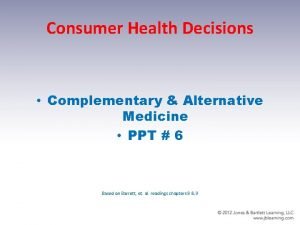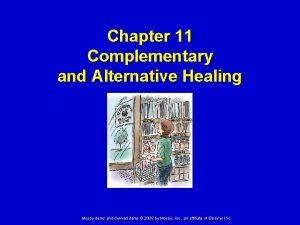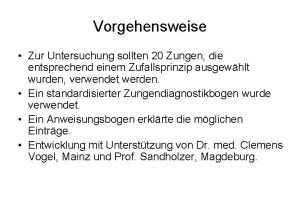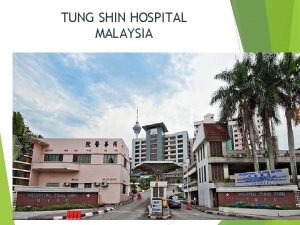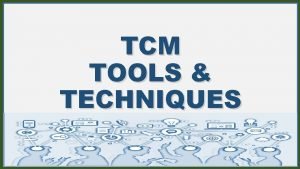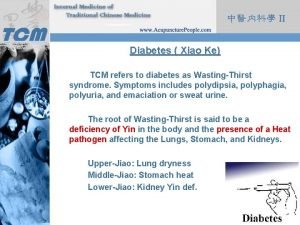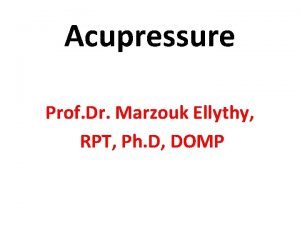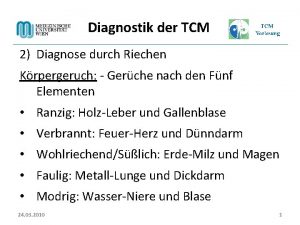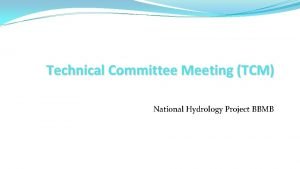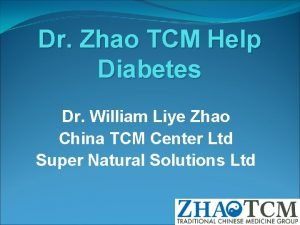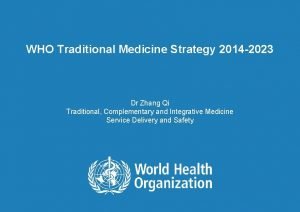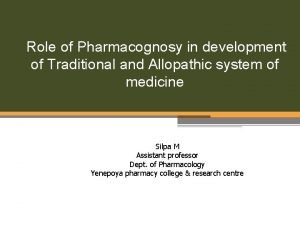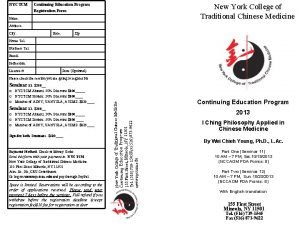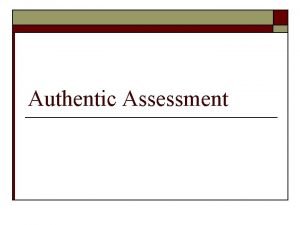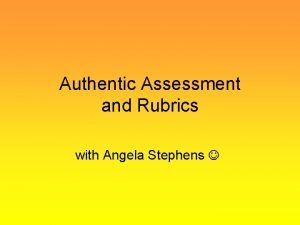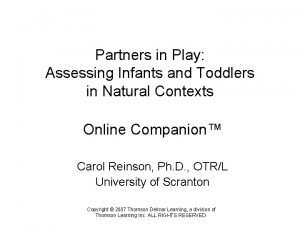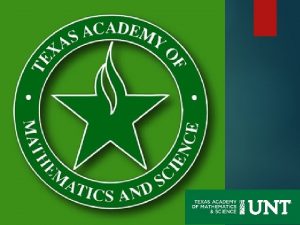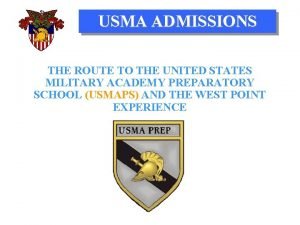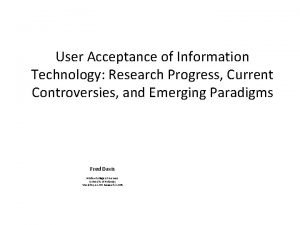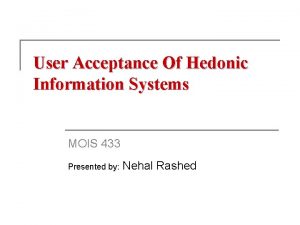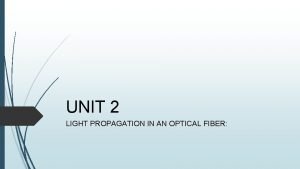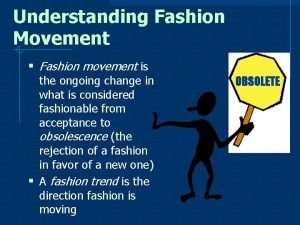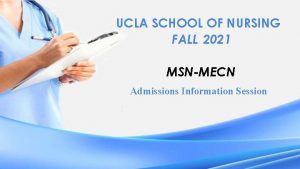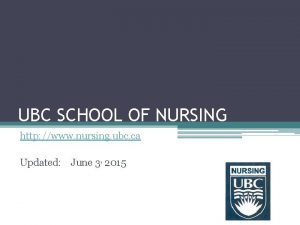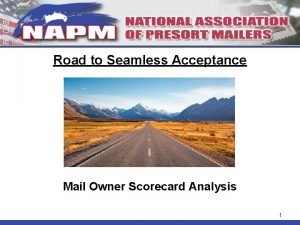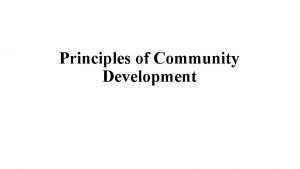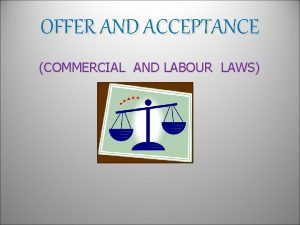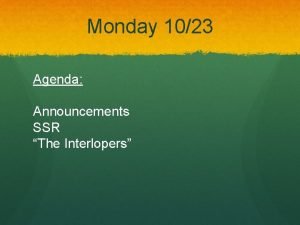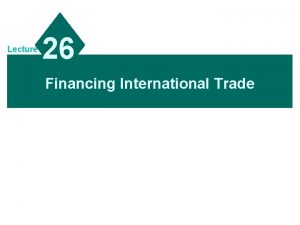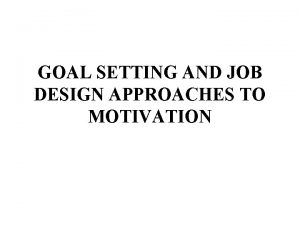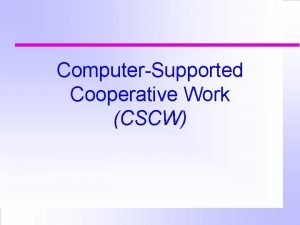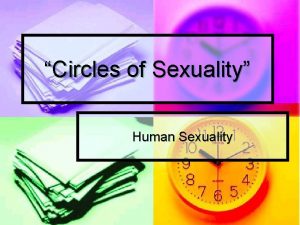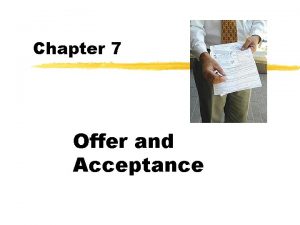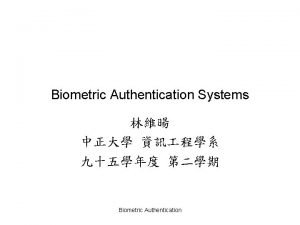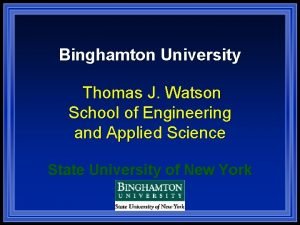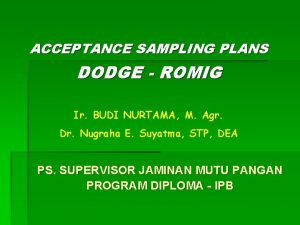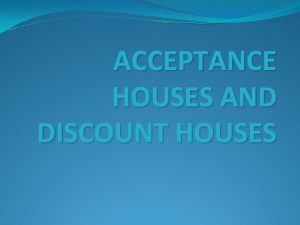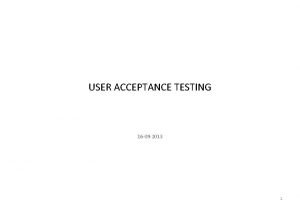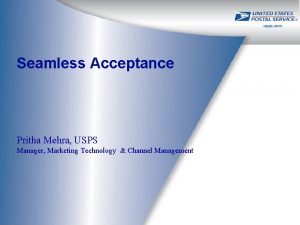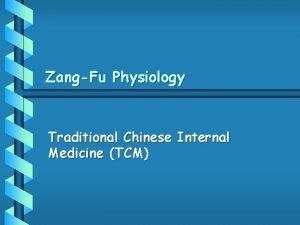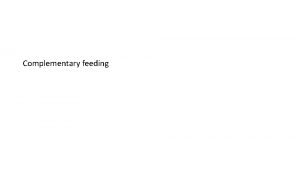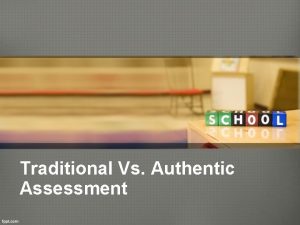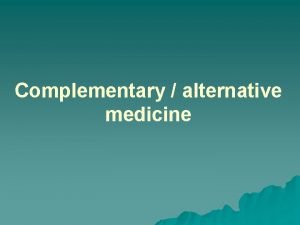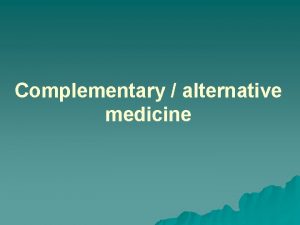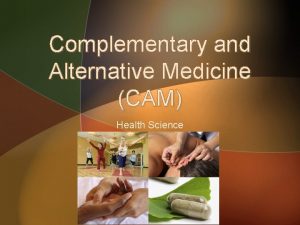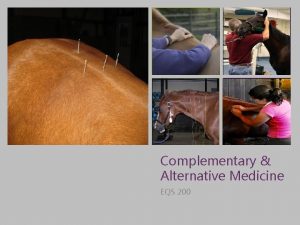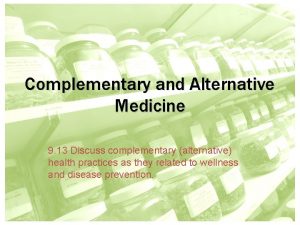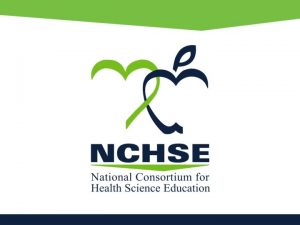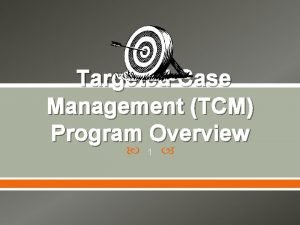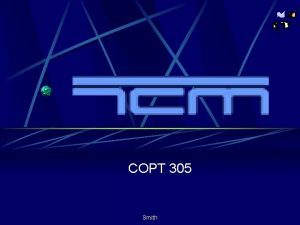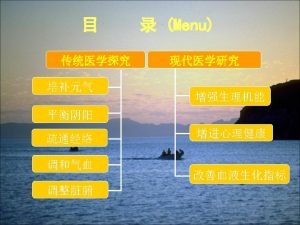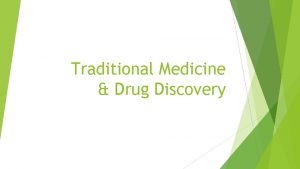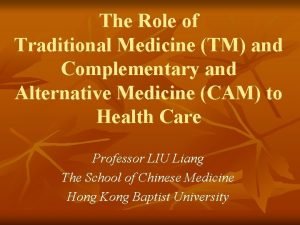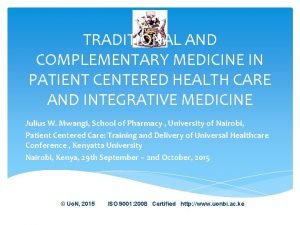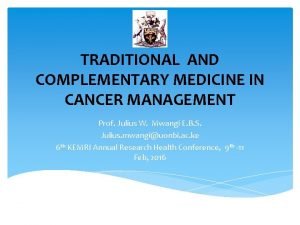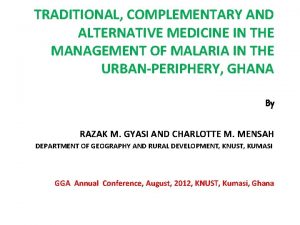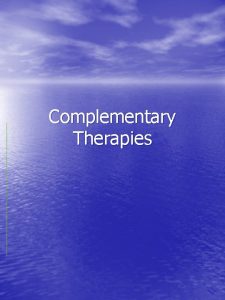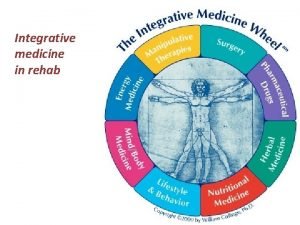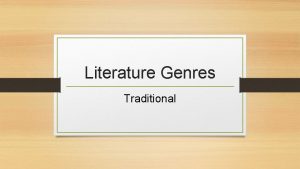ASSESSMENT ON ACCEPTANCE OF TRADITIONAL COMPLEMENTARY MEDICINE TCM










































- Slides: 42

ASSESSMENT ON ACCEPTANCE OF TRADITIONAL & COMPLEMENTARY MEDICINE (T&CM) SERVICES BY MEDICAL DOCTORS IN KLANG VALLEY & PUTRAJAYA

Preface

Acknowledgement

Introduction

Background • What is traditional medicine? • What is complementary medicine? • What is traditional and complementary medicine?

T&CM Policy in Malaysia


Integration of Traditional & Complementary Medicine in Healthcare System

Selected T&CM services provided in identified hospitals include: • • Acupuncture; Traditional Malay massage; Herbal therapy as an adjunct therapy to oncology treatment; and Malay Postnatal care established in July 2009 (Hospital Putrajaya)

General Objective • To assess the acceptance of T&CM services amongst medical doctors in government hospitals at Klang Valley & Putrajaya.

Specific Objectives • • To determine the knowledge of medical doctors regarding T&CM services and associated socio demographic characteristics. To determine the acceptance of medical doctors regarding T&CM services and associated socio demographic characteristics. To determine the practise of T&CM services among medical doctors for Klang Valley and Putrajaya hospitals. To explore the relationship between socio demographic characteristics of medical doctors and their willingness to discuss/refer the patients to T&CM services.

Methodology: • A cross sectional study using a self- administered questionnaire conducted among medical doctors in all government hospitals within the Klang Valley and Putrajaya.

Non T&CM 1. Hospital Kajang 2. Hospital Ampang 3. Hospital Sungai Buloh 4. Hospital Serdang 5. Hospital Tunku Ampuan Rahimah, Klang 6. Hospital Kuala Lumpur 7. Hospital Selayang T&CM 8. Hospital Putrajaya


Results • Respondent Characteristics

No. 1. 2. 3. 4. 5. 6. 7. 8. 9 a. Subject Frequency Percent (%) Male 261 33. 5 Female 517 66. 5 Malay 444 57. 3 Chinese 161 20. 7 Indian 151 19. 5 Others 19 2. 5 <46 705 90. 5 46+ 74 9. 5 Medical degree 516 66. 5 Master/Ph. D 260 33. 5 With T&CM service 91 11. 7 Without T&CM service 688 88. 3 HO 180 23. 2 MO 327 42. 1 Specialist/Consultant 269 34. 7 <10 503 64. 6 10+ 276 35. 4 Formal TCM education Yes 57 7. 3 No 720 92. 7 Specific qualification Yes 2 0. 3 No 777 99. 7 Area of modality acupuncture & herbal medicine 1 50. 0 Gender/sex Ethnicity Age HQ Hospital type Position Services Item

6. HO 180 23. 2 MO 327 42. 1 Specialist/Consultant 269 34. 7 <10 503 64. 6 10+ 276 35. 4 Formal TCM education Yes 57 7. 3 No 720 92. 7 Specific qualification Yes 2 0. 3 No 777 99. 7 Area of modality acupuncture & herbal medicine 1 50. 0 Duration of course 1 year 1 50. 0 3 years 1 50. 0 9 c. Certification level Masters 2 100. 0 9 d. Institution/ organization Nanjing TCM 1 50. 0 Napier University 1 50. 0 Sources on T&CM Friends & family 448 63. 7 Self-reading 456 63. 1 Others - Internet 13 30. 2 Hospital CME 100 15. 5 Seminar/ conference 72 11. 2 Yes 294 46. 5 No 338 53. 5 7. 8. 9 a. 9 b. 10. 11. Position Services Share knowledge

• Respondent Knowledge on T&CM Services

Questions TCM (n/%) N Non TCM (n/%) N 1. Traditional & Complementary Medicine Division is established to ensure safe practices of T&CM. 65(78. 3) 83 482(74. 7) 645 2. T&CM services offered in the pilot hospitals are for wellness purposes. 59(71. 1) 83 429(66. 9) 641 3. Traditional and Complementary Healthcare Practices Act has been passed by the Parliament. 31(37. 3) 83 174(27. 3) 638 4. The National T&CM policy (2001) states that the T&CM therapy shall be incorporated into Malaysia health care system. 35(38. 5) 83 202(32. 1) 629

Questions TCM (n/%) N Non TCM (n/%) N 5. Indicate hospitals that had been selected for the T&CM pilot project: Hospital Kepala Batas, Pulau Pinang. Hospital Putrajaya. Hospital Sultan Ismail, Johor. 5(7. 2) 69 40(6. 7) 596 6. Indicate the T&CM modalities offered by the pilot hospitals: Acupuncture. Malay traditional massage. Herbal treatment. 39(50. 0) 78 132(21. 4) 617

• Respondents’ Attitude on T&CM Services

Attitude TCM Hospital (n/%) Non TCM Hospital (n/%) Total (N/%) Positive 8(10) 53(8. 4) 61(8. 6) Negative 72(90) 580(91. 6) 652(91. 4) 80 633 713

Statement Total T&CM n(%) Non-T&CM n(%) a. T&CM services should be integrated as part of hospital services. 390 (50. 1) 58 (65. 9) 332 (48. 7) b. T&CM services will reduce the workload of conventional medicine. 225 (28. 9) 35 (40. 2) 190 (27. 9) c. T&CM services will increase the quality of life of the patients. 424 (54. 4) 67 (76. 1) 357 (52. 9) d. T&CM services will prevent patients from seeking unregulated T&CM practices. 580 (74. 4) 69 (78. 4) 511 (75. 3) 242 (31. 3) 34 (40. 0) 208 (30. 6) for 570 (73. 2) 59 (68. 6) 511 (75. 4) hospitals 419 (53. 8) 59 (67. 8) 360 (53. 0) h. T&CM services are carried out in a safe and accountable environment in the hospital. 481 (61. 7) 70 (81. 4) 411 (60. 7) Integration Benefits e. T&CM services recovery process. speed up f. Patients treatment. more choices have patients’ Safety g. T&CM practitioners practise patient safety. in

Statement Total T&CM n(%) Non-T&CM n(%) i. T&CM will become the preferred treatment in comparison to conventional treatment by patients in the future. 177 (22. 7) 12 (14. 0) 71 (10. 5) j. T&CM has a future in the Malaysian healthcare system. 468 (60. 0) 56 (65. 1) 412 (60. 5) k. CME on T&CM services should be given to healthcare professionals on regular basis. 455 (58. 4) 47 (54. 0) 408 (60. 0) l. T&CM should be included conventional medical education. in 413 (53. 0) 51 (58. 6) 362 (53. 3) m. A medical doctor should not refer patients to T&CM services provided in government hospitals. 403 (51. 7) 42 (48. 2) 361 (53. 1) n. A medical doctor should consider using T&CM for him/herself. 288 (36. 9) 38 (43. 6) 250 (36. 7) o. T&CM therapies hold promise for treatment of certain diseases. 357 (45. 8) 45 (51. 7) 312 (45. 9) Competition in service Acceptance

Statement Total T&CM n(%) Non-T&CM n(%) p. Accepting T&CM services will reduce the respect of my peers. 437 (56. 1) 48 (55. 1) 389 (57. 1) q. T&CM therapies need further scientific testing before being used with conventional medicine. 596 (76. 6) 61 (70. 9) 535 (78. 8) r. The results from T&CM therapies are mainly due to a placebo effect. 16 (21. 2) 17 (19. 5) 148 (21. 7) s. T&CM therapies provide temporarily relief without long-term gains. 192 (24. 7) 16 (18. 3) 176 (25. 9) t. T&CM services “sham/quack” practices. 327 (42. 0) 30 (34. 9) 297 (44. 2) Skepticism are definitely

• Respondent Practice on T&CM Services

Proportions of Practice among Respondents in Klang Valley Hospitals Statement Yes/No Frequency (%) 1. Would you let your patients know about the T&CM therapies in hospitals with T&CM services? Yes (n=688) 603(87. 6) 2. Would you refer your patients to T&CM unit in hospitals with T&CM services? Yes 536(77. 9) 3. Would you support the initiation of T&CM unit in your hospital? Yes 525(76. 3) 3. 1. If no, why? (n=163) 3. 1 a. Unethical 3. 1 b. Belief of ineffectiveness of T&CM 3. 1 c. Lack of evidence of effectiveness 3. 1 d. Competition 3. 1 e. Lack of legal recognition 3. 1 f. Costs 3. 1 g. Cost effectiveness 3. 1 h. Lack of training 3. 1 i. Distrust Philosophical differences 3. 1 j. Profit motive Yes Yes Yes 59(36. 2) 92(56. 4) 133(81. 6) 31(19. 0) 121(74. 2) 49(30. 1) 68(42. 3) 118(72. 4) 75(46. 0) 46(28. 2) 4. Have you ever used T&CM for yourself? Yes (n=688) 303(44. 0) 5. Have any of your family members used any T&CM therapies? Yes 457(66. 4) 6. Have you documented any T&CM use by your patients in their records? Yes 323(46. 9) 7. Have you documented any adverse effects of T&CM experienced by your patients? No 362(52. 6)

Proportions of Practice among Respondents in Hospital Putrajaya Statement Yes/No Frequency (%) 1. Have you offered your patients on T&CM options? Yes (n=91) 37(40. 7) 2. Have you sought the opinions of others regarding T&CM options? Yes 34(37. 4) 3. Have you referred patients to T&CM services? Yes 35(38. 5) 3. 1. If yes, which services do you refer to? (n=35) 3. 1 a. Herbal treatment 3. 1 b. Massage 3. 1 c. Acupuncture Yes Yes 5(14. 3) 27(77. 1) 22(62. 9) 4. Have you ever used T&CM for yourself? Yes (n=91) 28(30. 8) 5. Have any of your family members used any T&CM therapies? Yes 39(42. 9) 6. Have you documented any T&CM use by your patients in their records? Yes 26(28. 6) 7. Have you documented any adverse effects of T&CM experienced by your patients? No 75(82. 4)

• Relationship between Socio Demographic Characteristics of Medical Doctors and Their Willingness to Discuss/ Refer the Patients to T&CM Services

T&CM (n/%) Non T&CM (n/%) >46 yrs (2/5. 7) (42/78) Female (27/77. 1) (375/70. 1) Rheumatologists O&G (3/25) (24/82. 8) Generalists (24/68. 6) (369/70. 4) Ever used (8/22. 9) (263/49. 1) positive acceptance (6/20) (53/10. 7) have knowledge in T&CM services (23/92) (410/93. 2) Specialty

Discussion

• Based on literature reviews: ØDemographic characteristics of doctors: ØAge ØGender ØSpecialty ØSelf use • From the findings: ü>46 yrs üFemale üGeneralists üEver used

• Based on literature reviews: ØPhysicians’ knowledge of T&CM: ØQo. L • From the findings: üWellness purposes üFulfill needs

• Based on literature reviews: ØPhysicians’ attitude towards T&CM: ØIntegration ØCompetition ØAcceptance • From the findings: üAs part of hospital services üFuture üNot to use üRegular basis & included in conventional medical education

• Based on literature reviews: ØPhysicians’ attitude towards T&CM: Øskepticism • From the findings: üNeed further testing üReduce respect

• Based on literature reviews: ØPhysicians’ practice of T&CM: Øreferral • From the findings: üReferred patients üMassage & acupuncture

Conclusion

Limitation

Suggestion

References • • • Ahmad Syukri Chew. 2008. Traditional/Complementary Medicine. Possible Ethical Dilemma. MMA News. April: 18 -22. Annual Report, T&CM Division, MOH, 2007. Corbin, W. L. & Shapiro, H. 2002. Physicians want education about Complementary and Alternative Medicine to enhance communication with their patients. Archives International Medicine 162: 1176 -1181. Deraf Penilaian Pertengahan Penggal Rancangan Malaysia Ke-9 Kementerian Kesihatan Malaysia Program: Penyelidikan Dan Sokongan Teknikal, Disember 2007. Eisenberg, D. M. , Kessler, RC. , Foster, C. 1993. Unconventional medicine in the United States: prevalence, costs and patterns of use. New England Journal of Medicine 328: 246 -252. Eisenberg D. M. , Davis, R. B. , Ettner, S. L. , Appel, S. , Wilkey, S. , & Van Rompay, M. 1998. Trends in alternative medicine use in the United States, 1990 -1997: results of a follow-up national survey. JAMA 280: 15691575. Eirnarson, A. , Lawrimore T. , Brand, P. , Gallo, M. , Rotatone, C & Koren, G. 2000. Attitudes and Practices of Physicians and Naturopaths Toward Herbal Products, Including Use During Pregnancy and Lactation. Can J Clin Pharmacol. 7: 45 -49. Furnham, A. & Kirkcaldy, B. 1996. The health beliefs and behaviors of orthodox and complementary medicine clients. British Journal of Clinical Psychology 35: 49 -61.

• • • Furnham, A. & Forey, J. 1994. The attitudes, behaviors and beliefs of patients of conventional vs complementary (alternative) medicine. Journal of Clinical Psychology. 50: 458 -469 Kurtz, M. E. , Nolan, R. B. & Rittinger, W. J. 2003 Primary care physicians’ attitudes and practices regarding Complementary and Alternative Medicine. Journal of the American Ostheopathic Association 103(12): 597 -602. Levine, M. A. & Levine, M. L. W. & Mayberry, R. M. 2003. Complementary and Alternative Medical Practices: Training, Experience, and Attitudes of a Primary Care Medical School Faculty. The Journal of the American Board of Family Medicine. 16(4): 318 -326. Lie, D. A & Boker, J. 2006. Comparative survey of Complementary and Alternative Medicine (CAM) attitudes, use, and information-seeking behaviour among medical students, residents & faculty. BMC Medical Education 6: 58. Majeed, K. , Mahmud, H. , Khawaja, H. R. , mansoor, S. , Masood, S & Khimani, F. 2007. Complementary and Alternative Medicine: Percetions of Medical Students From Pakistan. Med Educ Online 12: 11. Micozzi, M. S. 1996. The Need To Teach Alternative Medicine. The Chronicle of. Higher Education Aug (A 48). Murray, J & Shepherd, S. 1993. Alternative or Additional Medicine? An Exploratory Study in General Practice. Soc Sci Med, 37: 983 -988. National Policy of Traditional & Complementary Medicine, T&CM Division, MOH, 2 nd ed. 2007). Oberbaum, M. , Notzer, N. , Abramowitz, R & Branski, D. 2003. Attitude of Medical Students to the Introduction of Complementary Medicine into the Medical Curriculum in Israel. IMAJ 5: 139 – 141.

• • • Poynton, L. , Dowell, A. , Dew, K. & Egan, T. 2006. General practitioners’ attitudes toward (and use of) complementary and alternative medicine: a New Zealand nationwide survey. http: //www. nzma. org. nz/journal/119 -1247/2358. html [6 Februari 2008]. Sikand, A. & Laken, M. 1998. Pediatricians’ experience with and attitudes toward Complementary/Alternative Medicine. Archives of Pediatrics & Adolescent Medicine 152: 1059 -1064. Tiralongo, E. & Wallis, M. 2008. Attitudes and perceptions of Australian pharmacy students towards Complementary and Alternative Medicine - A pilot study. http: //www. biomedcentral. com/1472 -6882/8/2. html [6 February 2008]. Traditional & Complementary Medicine Division. Standard Operating Procedures for T&CM Unit in Hospital, Revised Edition, July 2009. Verhoef, M. J & Sutherland, L. R. 1995. General Practitioners’ Assessment of and Interest in Alternative Medicine in Canada. Soc Sci Med 41: 511 -515. Wahner-Roedler, D. L. , Vincent, A. , Elkin, P. L. , Loehrer, L. L, Stephen S. Cha & Bauer, B. A. 2006. Physicians’ attitudes toward Complementary and Alternative Medicine and their knowledge of specific therapies: A survey at an academic medical center. e. CAM 3(4): 495– 501. Wetzek, alternative medicine at U. S. Wetzek, M. S. , Eisenberg, D. M. & Kaptchuk, T. J. 1998. Courses involving complementary and medical schools. JAMA 280: 784 -787. Zwicky, J. F. , Hafner, A. W. & Barrett, S. 1993. Reader’s Guide to Alternative Health Methods: Scientific Perspective. Chicago, Ill: American Medical Association 3 -13. Wilkinson, Leland; APA Task Force on Statistical Inference (1999). "Statistical methods in psychology journals: Guidelines and explanations". American Psychologist 54: 594– 604. doi: 10. 1037/0003 -066 X. 54. 8. 594
 Components of consumer health ppt
Components of consumer health ppt Chapter 11 complementary and alternative medicine
Chapter 11 complementary and alternative medicine Zunge fibrilliert
Zunge fibrilliert Tung shin hospital charges
Tung shin hospital charges Tcm tools
Tcm tools Xiao ke fang
Xiao ke fang Cun measurements tcm
Cun measurements tcm Programme tcm
Programme tcm Schwacher puls tcm
Schwacher puls tcm Tcm technical committee meeting
Tcm technical committee meeting Glimeplride
Glimeplride Integrated people-centred health services
Integrated people-centred health services Role of pharmacognosy in traditional system of medicine
Role of pharmacognosy in traditional system of medicine New york college of traditional chinese medicine mineola
New york college of traditional chinese medicine mineola Medicine wheel colours in order
Medicine wheel colours in order Authenticity in assessment meaning
Authenticity in assessment meaning Rubistar presentation rubric
Rubistar presentation rubric Advantages of traditional assessment
Advantages of traditional assessment Tams sat score
Tams sat score Usmaps acceptance rate
Usmaps acceptance rate User acceptance of information technology
User acceptance of information technology User acceptance of hedonic information systems
User acceptance of hedonic information systems Optical fiber light propagation
Optical fiber light propagation Fashion movement definition
Fashion movement definition Ucla nursing application
Ucla nursing application Ubc nursing courses
Ubc nursing courses Seamless acceptance scorecard software
Seamless acceptance scorecard software Principle of acceptance
Principle of acceptance Offer and acceptance
Offer and acceptance Acceptance vs tolerance
Acceptance vs tolerance Bankers acceptance
Bankers acceptance Acceptance objectives examples
Acceptance objectives examples Job design and goal setting
Job design and goal setting Tolerance vs acceptance
Tolerance vs acceptance Acceptance phase
Acceptance phase Childhood sensuality circle
Childhood sensuality circle Offer and acceptance
Offer and acceptance False acceptance rate
False acceptance rate Binghamton university watson school of engineering
Binghamton university watson school of engineering Dodge romig table
Dodge romig table Accepting houses
Accepting houses User acceptance testing template
User acceptance testing template Pritha mehra
Pritha mehra
